From 72 Grand Prix starts, Kilmany-born racing driver Jim Clark amassed a record 25 wins and 33 pole positions.
But 55 years ago, the two times Formula One world champion’s life was tragically cut short by a racing accident at Hockenheim, Germany.
How did Jim Clark die?
On April 7, 1968, Clark was killed when his Lotus-Cosworth skidded off the track and somersaulted into a wood at about 170mph during a Formula Two race.
The car had emerged from the Shrimps Head curve and was racing down the straight when the accident happened.
The Borders sheep farmer’s death, aged 32, came just five years after the first of his two world championship titles in 1963 and 1965.
His funeral was held a few days later in his home village of Chirnside.
It was attended by most of the Formula One drivers and thousands of other mourners.
Cousin recalls the aftermath
In an interview with The Courier to mark the 55th anniversary of Jim’s death and the 60th anniversary of his first Formula One championship win, Jim’s cousin Doug Niven recalls how the tragedy was a “tremendous shock to everyone”.
However, he recalls that one of the immediate challenges was finding Jim’s parents to let them know what had happened.
“I was living in his house and the television was on on the Sunday afternoon,” said Doug, 77.
“I think something came on the television. A newsflash.
“I remember they were trying to find where Jim’s parents were because they didn’t want them to find out through the news.
“Jim’s father was a farmer and had what he called these ‘mystery tours’.
“He’d go for a run in his car and just go around looking at peoples’ farms and fields and things.
“They didn’t know where he was. But eventually they found him.
“It was all very quick. Jim died on the Sunday and the funeral was on the Wednesday.
“After the funeral, all the drivers came to the house to have a cup of tea.
“It was very sad. Thousands of flowers there and people at the service.”
Legacy lives on
Today, Jim’s legacy lives on through the Jim Clark Trust.
Thousands of people have visited the Jim Clark Motorsport Museum since it opened to the public in August 2019.
At Kilmany, where Jim was born, there’s also a life-sized bronze tribute to the racer in his overalls by sculptor David Annand which was unveiled in 1997.
Most weeks, people from all over the world came to mourn and pay their respects to Jim both at his house and at his graveside in Chirnside.
They continue to do so, 55 years on from his untimely death.
However, with events being planned for June 24/25 this year at Duns Castle to mark the 60th anniversary of Clark’s 1963 championship win, and with similar events planned for 2025 to mark his second championship title as well as his Indianapolis 500 success in 1965, Doug said there’s more to come.
Cousin’s memories of Jim
Asked about his memories of Jim, Doug explained that his own father and Jim’s mother were brother and sister. Jim, who was born in Kilmany in 1936, was 10 years older than him.
From farming backgrounds, Jim’s family moved to the Borders from Fife around the same time his own family did.
Jim’s family moved to Edington Mains Farm, near Duns, Berwickshire, in 1942.
His racing career started in 1956 when Doug was 10 years old.
Before long, he was racing for a local garage under the Border Reivers banner.
Doug, a former pupil at Strathallan School in Perthshire, followed his career avidly.
By 1960, Jim was racing for Team Lotus and in 1963 he won his first Formula One World Championship, which was the year that Doug left school.
Doug went to watch him racing at Brands Hatch and Silverstone British Grand Prix races.
When Doug was 18 and he lost his own father, he became involved in running the family farm.
Doug got married in 1967 and, as his mother was still alive and living in the family farmhouse, he needed somewhere to stay.
Jim’s parents offered him Edington Mains farmhouse, which was Jim’s house.
It was empty because Jim was almost permanently out of the country, travelling for races and as a “tax exile”. He was based initially in Paris then Bermuda.
A lot of Jim’s motor-racing trophies were still in his house when Doug and his wife moved in.
When Jim died, however, his parents wondered what to do with them.
The local council in Duns offered to put the trophies on display in a council-owned room as a memorial.
This would allow people to see what Jim had achieved in his motor-racing career, which included winning two Formula One World Championships, 25 Grand Prix races and the Indianapolis 500 race in America.
Establishment of museum
At this point, Jim’s parents asked Doug to become a family trustee of the Jim Clark Memorial Room, along with a nephew of Jim’s.
The Memorial Room was opened in April 1969 by Scottish racing legend, and friend of Jim’s, Jackie Stewart.
A revamp took place in 1993 with the addition of a room showing films.
Then in 2012, Scottish Borders Council came to the family trustees with an offer of funds to completely revamp the room and build a new Jim Clark Museum.
The original format was becoming “dated” and visitor numbers were dropping because there was nothing new to see.
The Jim Clark Memorial Room Trust was, and still is, operational but a new charity, known as the Jim Clark Trust, was created.
The objective was to raise funds to build the new museum and promote the legacy and inspiration that Jim left behind.
They also wanted to educate the public about what Jim had achieved.
“The council put around £600,000 in the kitty and we got match-funding from the Heritage Lottery fund,” said Doug.
“Then the trust had to find another £300,000, so we had the £1.6m required for the project.
“The council would not let the project start until all the money had been raised.
“Working with some other benefactors, the target was met and The Jim Clark Motorsport Museum opened to the public in August 2019.
“Within a few months, over 10,000 visitors had come through the doors.
“Sir Jackie Stewart, the trust’s honorary president, opened the museum.
“To try and promote it and make it more of a day out, the trust rented an existing coffee shop and converted it into the Jim Clark bistro in the town of Duns.
“We also launched the Jim Clark trail which took you from Duns to where Jim’s farm was about five miles away at Chirnside where his grave is, and to other places linked to his life.”
Farming versus racing
Doug himself started racing about a year after Jim was killed – much against family opposition.
He puts this down to being so “immersed” in racing as a boy, watching his older cousin.
Doug raced for Border Reivers for 12 years, and won the Scottish championships a few times driving saloons.
The difference between Doug and Jim, however, was that Doug kept working as a farmer while Jim, who also faced family opposition to racing, gave farming up.
“Jim was a natural driver who was revered and liked as a very fair and modest man,” said Doug.
“Jackie Stewart said Jim was the greatest racing driver he came across.
“He was a sheep farmer from Scotland who got involved in motor sport – not because he really wanted to, but because his friend Ian Scott-Watson got him started.
“Then Jock McBain gave him cars.
“His parents were very much against him racing, as Jackie Stewart’s parents were. But he got involved and the rest is history.”
‘Nervous kind of guy’
Doug said that while Jim was a “modest unassuming farmer’s son”, he was a “nervous kind of guy too”.
“He could be indecisive away from the track and if he wasn’t racing he’d chew his nails,” added Doug.
“There’s a story about Jackie and him living in London and going out for a night to watch a film.
“By the time they decided, the film had started.
“All that just changed when he got on the track. It was his fairness. His big smile.
“He never got flustered. He just jumped into any car and got on with it. He was modest and unassuming.
“But as Jackie Stewart has often said, he just wishes Jim had stayed as a sheep farmer and carried on farming rather than being as good and competitive as he was, because no matter what car he turned to, he seemed to make it go faster than anyone else.”
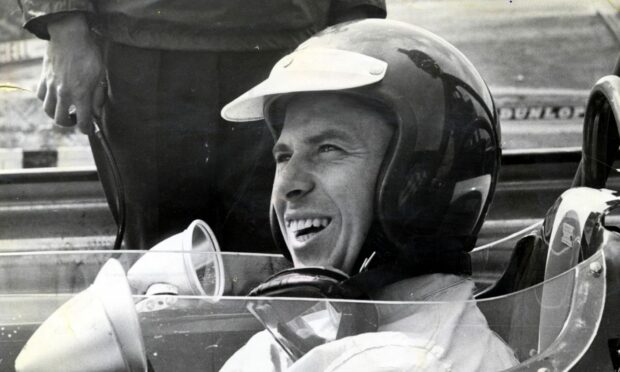
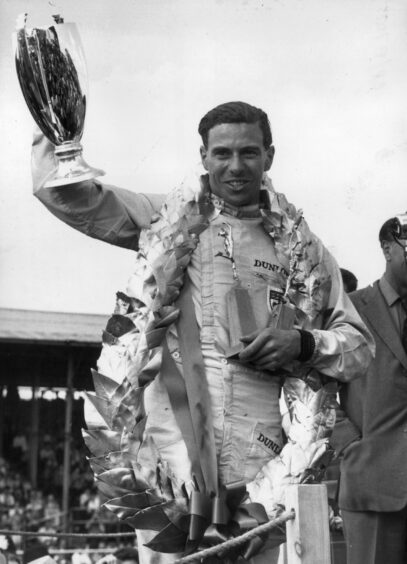
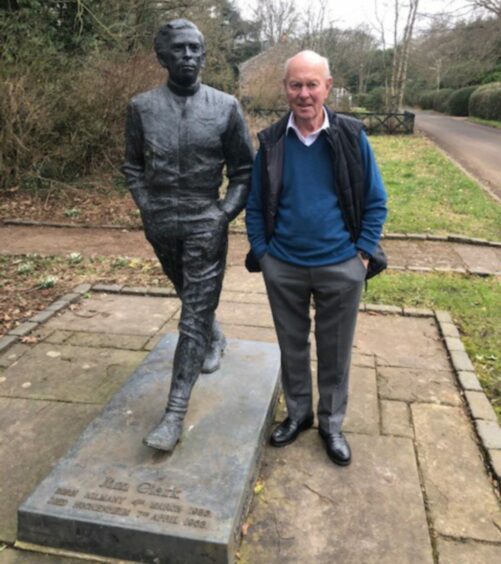
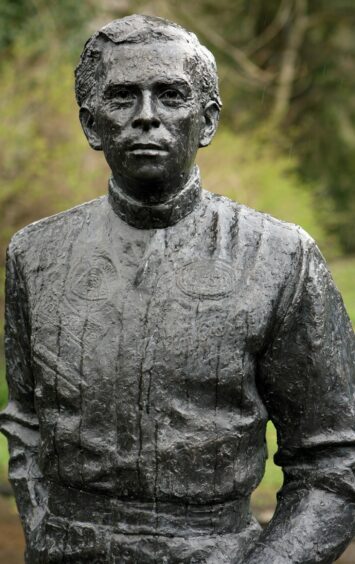
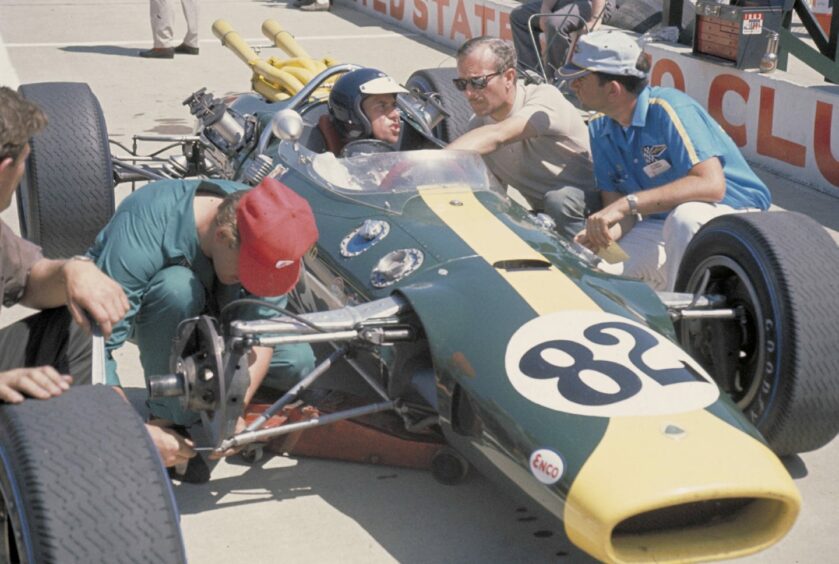
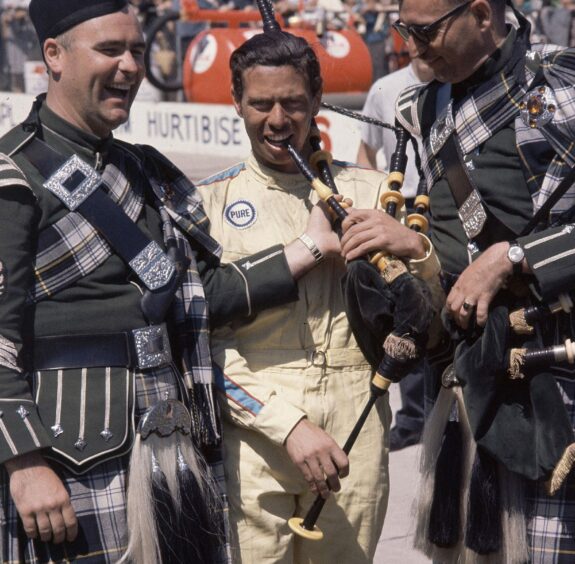
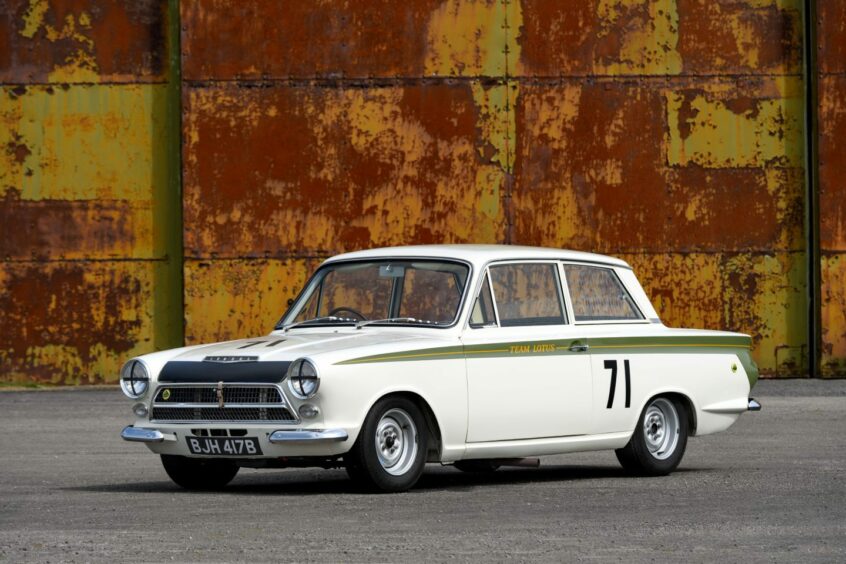
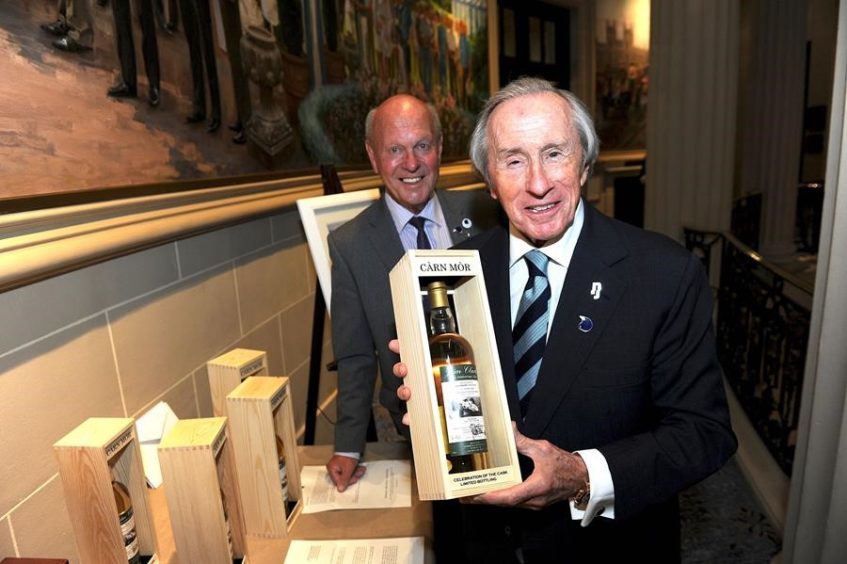










Conversation